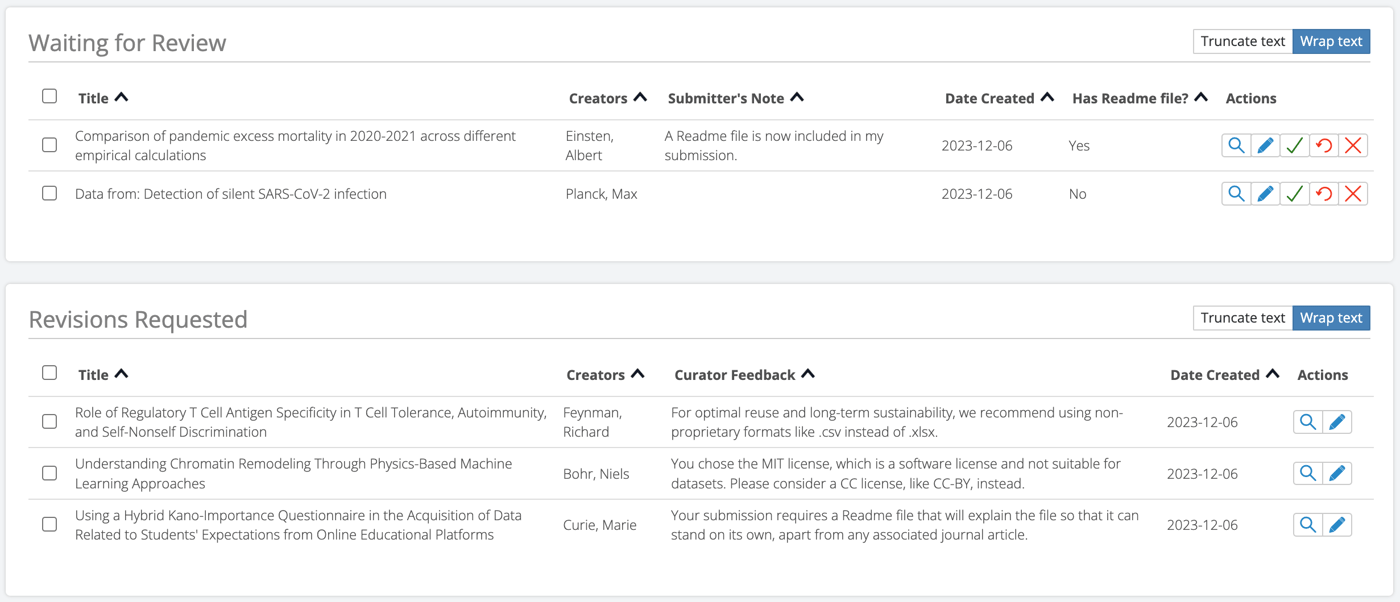Utilize user-friendly data submission forms to collect datasets from contributors.
Implement customizable data review workflows for data curation and quality control.
Allow researchers to enable automated software archiving via Github.
TIND RDM is hosted in AWS' scalable cloud infrastructure, supporting the hosting of millions of datasets and large file uploads.
TIND RDM supports the submission and storage of any file type, including 3D objects and more.
Ensure long-term data preservation through fixity checks, virus checks, and Archival Information Packages (AIP) for each dataset.
Assign persistent Digital Object Identifiers (DOIs) to your datasets, establishing their unique and citable identities.
In-browser previews and data visualization of CSV, XLSX, PDF, ZIP, image, audio and video file formats.
Integrate your ORCID identifier to enhance the visibility and credibility of your research outputs.
TIND RDM promotes FAIR principles, making your research data Findable, Accessible, Interoperable, and Reusable.
TIND RDM uses the DataCite Metadata Schema for comprehensive, high-quality metadata of research data.
Automatically submit datasets to DCN for review, and grant direct access rights to a network curator.

At Washington University in St. Louis, TIND RDM has played an important role in improving the discoverability and reusability of research data. This has been achieved by driving adherence to the FAIR principles, integrating their data curation and publication workflow with DataCite, and fostering collaboration through the Data Curation Network (DCN).
"TIND RDM is providing a hosted solution that integrates the DataCite schema and supports our data curation workflow. We are committed to FAIR data sharing, and we believe TIND RDM positions us well to meet that commitment.''

The submission forms are based on the robust DataCite Metadata Schema, ensuring that all uploaded data is accompanied by comprehensive, high-quality metadata.
Each form is tailored to only include and display the relevant fields to the researcher, while offering a more advanced form backend to the curator.
Submission forms can include custom fields, and institutions may implement multiple forms each tailored for particular data types or disciplines.
The review workflow manages interactions between the submitter and the curator throughout the submission process and plays a key part in ensuring the consistency and quality of published data.
The workflow is configurable to include steps such as assigning curators, managing metadata, and evaluating submissions based on FAIR principles.
TIND RDM assigns DOIs as part of the submission process, ensuring that each dataset is uniquely citable and identifiable.
The system also supports data versioning and creating links between related items, such as related publications, datasets, or previous versions of a dataset.
We realize not all data is open, and support both file and metadata restriction for any data submission.
Our exceptional implementation and support services offer personalized guidance, whether basic configurations or complex, customized solutions. Each new customer gets a dedicated project manager to guide you through the implementation process with bi-weekly meetings. We are dedicated to providing continuous support and education, ensuring a seamless and efficient transition to TIND RDM for your institution.

“We went into the implementation believing with some crossed fingers that all this would be possible. And TIND over-delivered, which is something that you almost never say. We finished on time, and we got everything we wanted. It felt like the implementation team was invested in getting things right for us. It felt like a partnership building this thing.”
- Jennifer Moore, Head of Data Service at WashU
Request a Demo or Meeting with a Product Specialist